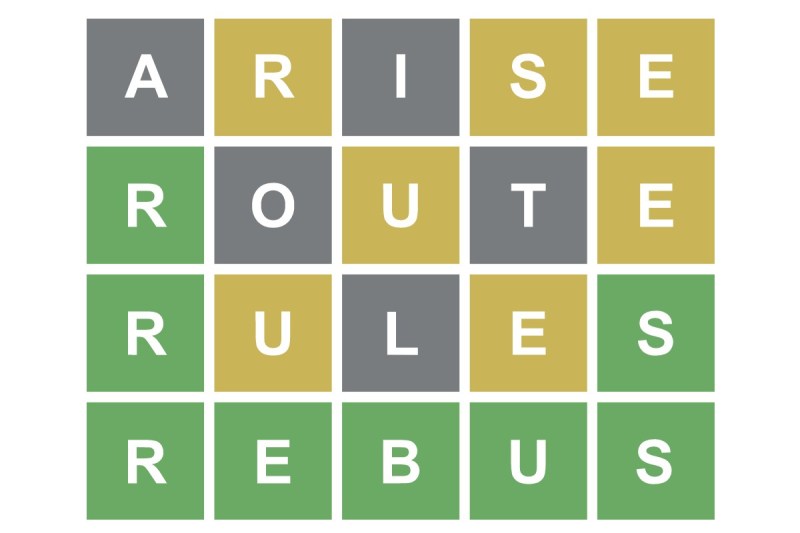The Wordle app’s popularity has cratered since The New York Times (NYT) acquired the app, but the latter is only one possible reason for the former’s fall.
Wordle’s plunge from late January highs are down almost 1000% in July. An average of 350,000 users posting game results to Twitter in the first month of the year. Those tweets are barely breaking 40,000 posts in July. Gaming function, management missteps, seasonal changes, knockoff apps, paywall rumors, and the essential nature of the phrase “gone viral” all factor into the decline. Despite the dive, Wordle’s January acquisition has been a success for NYT. According to first quarter earnings, subscriptions to app games are driving growth for the media giant.

“While we experienced real momentum in news, it was not the only driver… Wordle brought an unprecedented tens of millions of new users to The Times, many of whom stayed to play other games, which drove our best quarter ever for net subscriber additions to Games,” President and CEO Meredith Kopit Levien said in the report.
There are still plenty of people out there yet to jump on the Wordle bandwagon. That’s why we’re here today — to explore if the Josh Wardle creation is worth the post-viral time and distraction.
What Is Wordle?
Before plunging in, let’s describe what’s in the water. People can Wordle on the NYT web page or download the iOS or Android apps. Wordle asks players to guess a five-letter word in a maximum of six guesses. It’s a simple yet wiggly daily challenge that can lead to players losing their marbles if they fail to complete it.
i am going to become the joker
Wordle 388 X/6
⬛🟩🟩🟩🟩
⬛🟩🟩🟩🟩
⬛🟩🟩🟩🟩
⬛🟩🟩🟩🟩
⬛🟩🟩🟩🟩
⬛🟩🟩🟩🟩— Erik Malinowski (@erikmal) July 12, 2022
Every day, there is a new puzzle — one chance to continue winning streaks. As every player plays the same puzzle day to day, the challenge becomes social, hence the preponderance of posting memes, broken streaks, associated museum pieces, and dog Wordle’s (hint: The word is “TREAT”).
Created by Reddit software engineer Josh Wardle, the game is completely free to play and used to be devoid of ads and in-app purchases. That changed with the Times. Now ads pop up after almost every click on the app.
How to Play Wordle
To begin a Wordle contest, enter any five-letter word — mount, rider, digit, frogs, etc. Letters that aren’t in the word are highlighted in gray (and are subsequently grayed out on keyboards). Letters users have matched, but aren’t in the correct location appear in yellow. And correct letters with correct locations materialize in green.
If my dog played Wordle pic.twitter.com/lBGJl5Q07M
— Tom Fornelli (@TomFornelli) July 7, 2022
Wordle Strategies
There are a number of strategies to employ when rearranging and forming new conjectures. Using as many common letters as possible, especially vowels, is a good start. A word without the letter “A,” for example, eliminates a number of combinations. For a deeper dive into letter selection, the good folks at Art of Problem Solving provide some useful tips.
The site found that over 15% of daily Wordle’s begin with an S, and C, B, T, P, and A. These are also the only other starting letters that appear in more than 5% of correct words. These starting letters align with the general five-letter words. Correspondingly, vowels dominate the second and third letters vowels. A, O, R, E, I, L, U, and H appear in more than 5% of Wordle words as the second letter. There is a steep drop-off after that.
Another sneaky ploy is skipping the correct letters in the second attempt. Let’s say “STORE” is a first guess, and it turns out S and R are in play with T, O, and E out. The next attempt could be “BLINK,” which introduces more possible letters to link with S and R.
App Extras
Once people have attempted the puzzle for the day, they’re invited to share their Wordle journey. The tweet looks like this…
Wordle 389 4/6
⬛⬛🟩⬛⬛
⬛🟩🟩⬛⬛
⬛🟩🟩🟩⬛
🟩🟩🟩🟩🟩 no yellows today @SaraEMole— Steph Hughes (@NclSteph) July 12, 2022
There’s a pop-up ad before results are returned, and there’s another one for extra rewards post finishing. There are ads before Wordle’s add-on games open as well. Once Word Fever and Secret Word finally pop up (post ad), the action is entertaining enough for literary-leaning folk.
Word Fever asks operators to create three-, four-, and five-letter words from a random set of four, five, and six letters. If the word is acceptable, players get a point and move on to the next word. Play continues until the timer finally runs out before a word is made.
Secret Word is a little less concrete and requires more critical thinking. Competitors have to again form a word from a jumble, but the word has to be synonymous or an object of a previous word. Think “SKY,” then “SUN,” “WARM,” (another ad), “COOK,” “HAMBURGER,” “MEAT,” etc. It’s not an exact science, but one that could certainly promote plastic brain growth.
These practice rounds also sharpen primary Wordle gameplay chops.
The Final Word(le)
Wordle is a fun application, and it’s easy to understand the game’s engaging and competitive nature. Wordle is also fairly limited in function with the daily challenge providing most of the action. It gets to be a bore or a chore, as there aren’t a lot of further in-app options or directions. And the ads, my God, the ads. A 30-second ad popping up after almost every click is enough to drive away even the most hard-core players.
While it’s still unclear if Wordle can maintain its current popularity level, the game has certainly left a mark on the mobile gaming culture and provided a roadmap to success for further apps.



